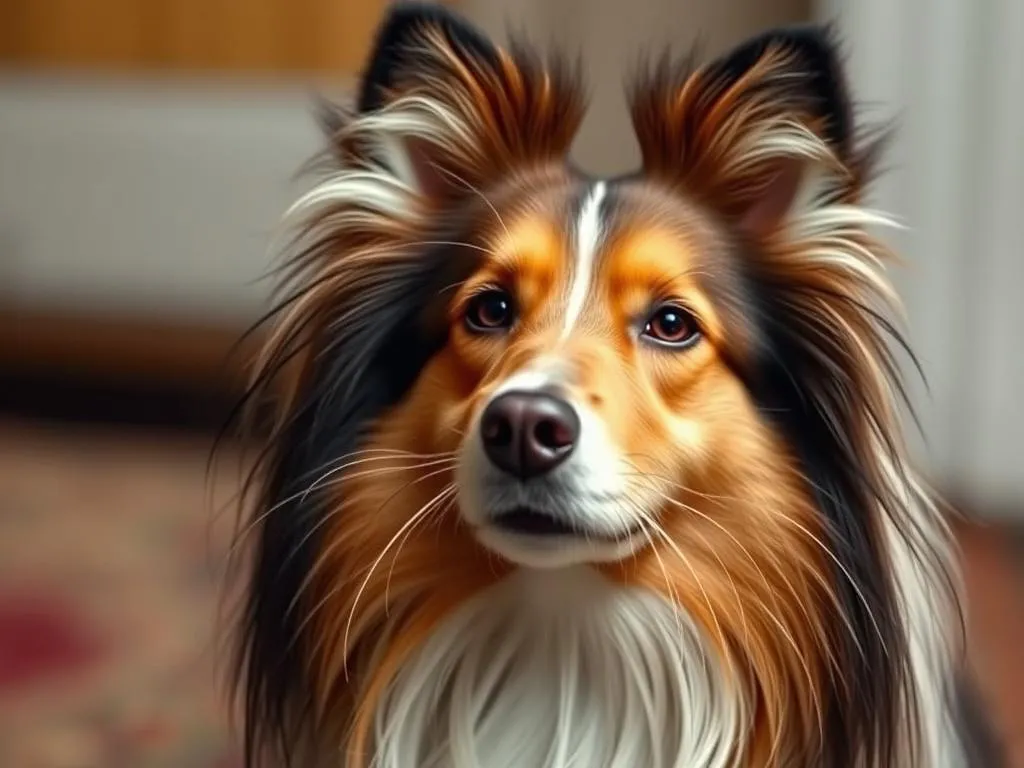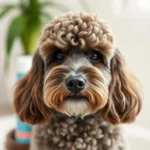
Introduction
Shetland Sheepdogs, affectionately known as Shelties, are a beloved breed known for their intelligence, loyalty, and striking beauty. Originating from the Shetland Islands of Scotland, these dogs were initially bred for herding sheep and other livestock. Their energetic and playful nature, combined with their stunning double coat, makes them a favorite among dog enthusiasts. However, the same coat that contributes to their charm requires diligent care to ensure their health and appearance.
Grooming is not just a cosmetic necessity for Shelties; it’s a crucial aspect of their overall well-being. Regular grooming helps prevent matting, promotes skin health, and strengthens the bond between you and your furry friend. In this guide, we will explore how to groom a Sheltie, covering everything from understanding their coat to essential grooming tools and techniques.
Understanding the Sheltie Coat
Coat Types and Characteristics
The Sheltie boasts a beautiful double coat, consisting of an outer layer of long, straight hair and a soft, dense undercoat. This unique structure provides insulation and protection from the elements. Shelties come in various colors, including sable, black, and blue merle, often with white markings. Understanding these features is vital for effective grooming, as each coat type may require different care.
Grooming Needs Based on Coat Type
Shelties exhibit seasonal shedding patterns, with heavier shedding occurring in spring and fall. During these times, their undercoat sheds significantly, making regular grooming essential to keep loose hair at bay. Common coat issues include matting, tangles, and dryness, especially if grooming is neglected. By learning how to groom a Sheltie properly, you can ensure that their coat remains healthy and beautiful.
Essential Grooming Tools
Brushes and Combs
To groom a Sheltie effectively, having the right tools is essential. Here are the primary types of brushes and combs you’ll need:
- Slicker Brush: Ideal for removing tangles and loose hair from the outer coat.
- Pin Brush: Great for smoothing out the coat and keeping it looking fluffy.
- Undercoat Rake: Perfect for reaching the dense undercoat, especially during shedding seasons.
Investing in high-quality grooming tools will make the process easier and more effective.
Bathing Supplies
Regular baths are an important part of how to groom a Sheltie. You’ll need:
- Dog Shampoo: Look for a gentle, hypoallergenic shampoo designed for dogs to avoid skin irritations.
- Conditioner: A good conditioner helps maintain moisture and reduce tangling.
- Drying Tools: Have plenty of towels and a pet-safe blow dryer or grooming gloves on hand to dry your Sheltie post-bath.
Nail and Ear Care Tools
Maintaining nail and ear hygiene is crucial for your Sheltie’s health. Here are the tools you’ll need:
- Nail Clippers or Grinders: Both have their pros and cons; clippers are quick, while grinders can be safer and more precise.
- Ear Cleaning Supplies: Use a vet-recommended ear cleaner and cotton balls to keep their ears free from wax and debris.
Steps to Groom a Sheltie
Preparing for Grooming
Before diving into the grooming process, create a comfortable environment for your Sheltie. Choose a quiet space where they feel secure. Gather all necessary tools and supplies to ensure a smooth grooming session.
Brushing the Coat
Brushing is a fundamental step in how to groom a Sheltie. Follow this step-by-step technique:
- Start with the Undercoat: Use the undercoat rake to gently remove loose hair and prevent matting.
- Move to the Outer Coat: Switch to the slicker brush to smooth out the outer layer. Brush in the direction of hair growth.
- Pay Attention to Problem Areas: Focus on areas prone to tangling, like behind the ears and under the legs.
- Finish with the Pin Brush: Use the pin brush to give the coat a final fluff and remove any remaining tangles.
Tip: Always be gentle and patient, as Shelties can be sensitive to rough brushing.
Bathing the Sheltie
Bathing frequency depends on your Sheltie’s lifestyle and coat condition, but a good rule of thumb is every 4-6 weeks. Here’s how to bathe your Sheltie effectively:
- Wet the Coat: Use lukewarm water to thoroughly wet your Sheltie’s coat.
- Apply Shampoo: Lather a dog-safe shampoo into their coat, avoiding the eyes and ears.
- Rinse Thoroughly: Make sure all shampoo is washed out to prevent skin irritation.
- Condition the Coat: Apply conditioner, focusing on the ends of the hair, and let it sit for a few minutes before rinsing.
- Dry the Coat: Use towels to absorb excess water, then a blow dryer set on low or grooming gloves can help dry the coat without causing frizz.
Nail Trimming
Regular nail care is essential for your Sheltie’s comfort and mobility. Follow this step-by-step guide for nail trimming:
- Prepare the Dog: Have your Sheltie sit comfortably, and hold their paw gently but firmly.
- Identify the Quick: Be cautious around the pink area (quick) in the nail, which contains blood vessels and nerves.
- Trim a Little at a Time: Clip the nail just above the quick, avoiding any bleeding. If you’re unsure, it’s best to err on the side of caution.
- Use a Grinder if Necessary: If your dog is anxious about clippers, try using a nail grinder for a smoother finish.
Tip: Regular nail trimming can prevent discomfort and potential injuries.
Ear Cleaning
Keeping your Sheltie’s ears clean is vital to prevent infections. Follow these steps for effective ear cleaning:
- Inspect the Ears: Look for signs of redness, odor, or excess wax, which may indicate an infection.
- Apply Ear Cleaner: Use a vet-recommended ear cleaner, applying a few drops into the ear canal.
- Massage the Base: Gently massage the base of the ear to distribute the cleaner.
- Wipe Away Debris: Use cotton balls to wipe out any dirt or wax, avoiding deep insertion into the ear canal.
Tip: Consult your vet if you notice any persistent issues with your Sheltie’s ears.
Post-Grooming Care
Skin and Coat Health
After grooming, maintaining your Sheltie’s coat and skin health is essential. Use high-quality dog shampoos and conditioners to keep their coat shiny and healthy. Additionally, consider a balanced diet rich in omega fatty acids to promote skin health and a lustrous coat.
Routine Check-ups
Regular veterinary visits are crucial to ensuring your Sheltie’s overall health. Discuss grooming practices with your vet, including any concerns you have about skin irritations, allergies, or ear infections.
Common Grooming Challenges and Solutions
Dealing with Matting
Matting can be a significant issue for Shelties if grooming is neglected. Here are some tips for prevention and removal:
- Regular Brushing: Brush your Sheltie at least once a week to prevent mats from forming.
- Use a Detangling Spray: A dog-safe detangling spray can help loosen mats before brushing.
- Safe Removal Techniques: If mats do form, use a slicker brush to gently work them out or consult a professional groomer for severe cases.
Handling Behavioral Issues
Some Shelties may be anxious or resistant during grooming sessions. Here’s how to build a positive grooming routine:
- Start Young: Introduce grooming to your Sheltie when they are a puppy to help them get used to the process.
- Use Positive Reinforcement: Reward your dog with treats and praise during and after grooming to create a positive association.
- Be Patient: Take breaks if your Sheltie becomes stressed, allowing them to relax before continuing.
Conclusion
Grooming is a vital aspect of maintaining your Sheltie’s health and beauty. By understanding their coat, using the right tools, and following proper grooming techniques, you can ensure that your furry friend remains comfortable and healthy. Establishing a consistent grooming schedule not only enhances their appearance but also strengthens the bond between you and your Sheltie. Share your experiences and tips in the comments below, and let’s help each other keep our beloved Shelties looking and feeling their best!
FAQs
How often should I groom my Sheltie?
It is recommended to brush your Sheltie at least once a week, with more frequent grooming during shedding seasons.
What should I do if my Sheltie’s coat is severely matted?
If your Sheltie has severe mats, it is best to consult a professional groomer for safe removal without causing stress or pain to your dog.
Can I use human shampoo on my Sheltie?
No, human shampoo can irritate a dog’s skin. Always use a dog-specific shampoo for grooming.
How can I tell if my Sheltie needs a professional groomer?
If your Sheltie is severely matted, has skin issues, or you are uncertain about safe grooming practices, it is best to seek a professional groomer.
What are the signs of skin allergies in Shelties?
Signs of skin allergies include excessive scratching, red or inflamed skin, hot spots, and hair loss. Consult your vet if you notice these symptoms.









